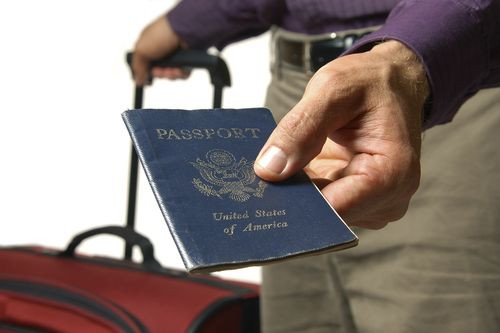Can Security Really Match A Photo-ID To The Right Person? This Skill Cannot Be Taught, Scientists Say

Apparently, all men and women are not created equal when it comes to being able to match a stranger to their I.D. photo. Oddly, this skill is also not something that "practice makes perfect," or so a recent study suggests.
An international team of researchers found staff members in an Australian passport office had a substantial 15 percent error rate when identifying people from their passport photos — the same average error rate as university students. "This study has importantly highlighted that the ability to be good at matching a face to an image is not necessarily something that can be trained,” said Dr. Mike Burton, a professor in the psychology department at University of Aberdeen. “It seems that it is a fundamental brain process and that some people are simply more adept at it than others.”
While it may seem easy to identify whether or not someone is holding a fake passport, the truth of the matter is you only see just one photo of the person standing before you, and that snapshot could have been taken 10 years ago. Faces may change considerably in that amount of time. For the current study, then, researchers wondered about the cognitive processes underlying the ability to properly match strangers to their pics. In one experiment, passport officers were asked to decide whether or not a photograph on their computer screen matched the face of a person standing in front of their desk.
In 15 percent of the trials, the officers said, "yes," the photograph on their screen matched the person standing before them, when, in fact, the photograph showed an entirely different person. "At Heathrow Airport alone, millions of people attempt to enter the UK every year,” said Dr. Rob Jenkins, department of psychology at the University of York. “At this scale, an error rate of 15 percent would correspond to the admittance of several thousand travelers bearing fake passports."
In a second experiment, the passport officers were asked to match current face photos to images taken two years ago or to genuine photo-ID documents, including passports and driving licenses. On this second task, the error rate rose to 20 percent — no different than that of a group of untrained student volunteers.
"Our conclusion would be that focusing on training security staff may be ploughing efforts in the wrong direction,” said Burton in a press release. “Instead we should be looking at the selection process and potentially employing tests such as the ones we conducted in the study to help us recruit people who are innately better at this process." He and his colleagues also suggest passports could contain more than one photo in order to make the identification process a little easier.
Source: White D, Kemp RI, Jenkins R, Matheson M, Burton IM. Passport Officers’ Errors in Face Matching. PLOS ONE. 2014.
Published by Medicaldaily.com



























